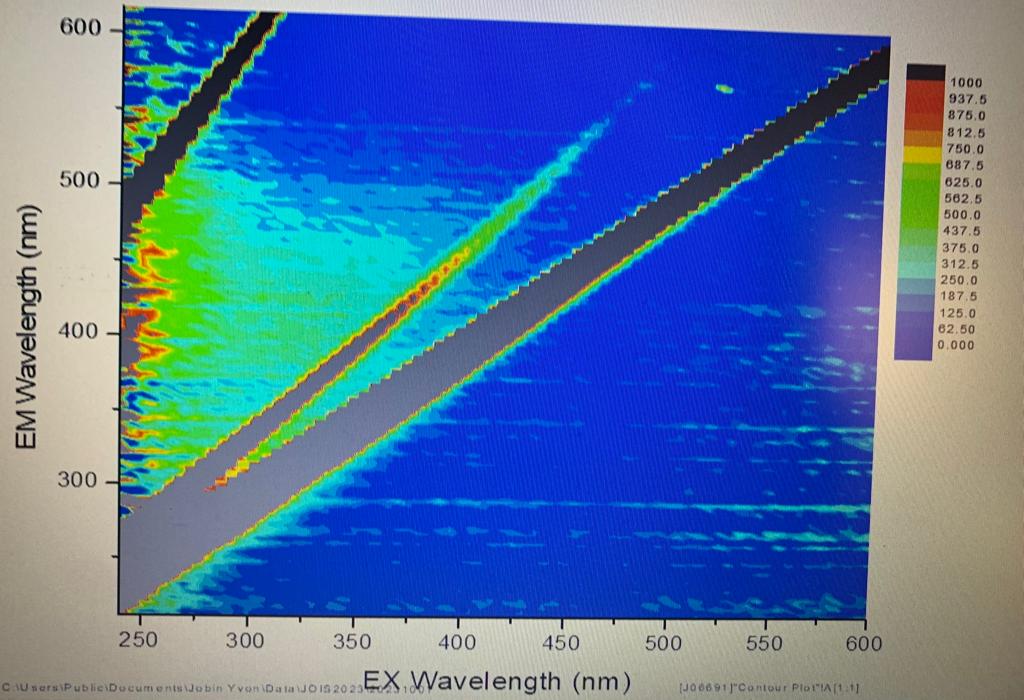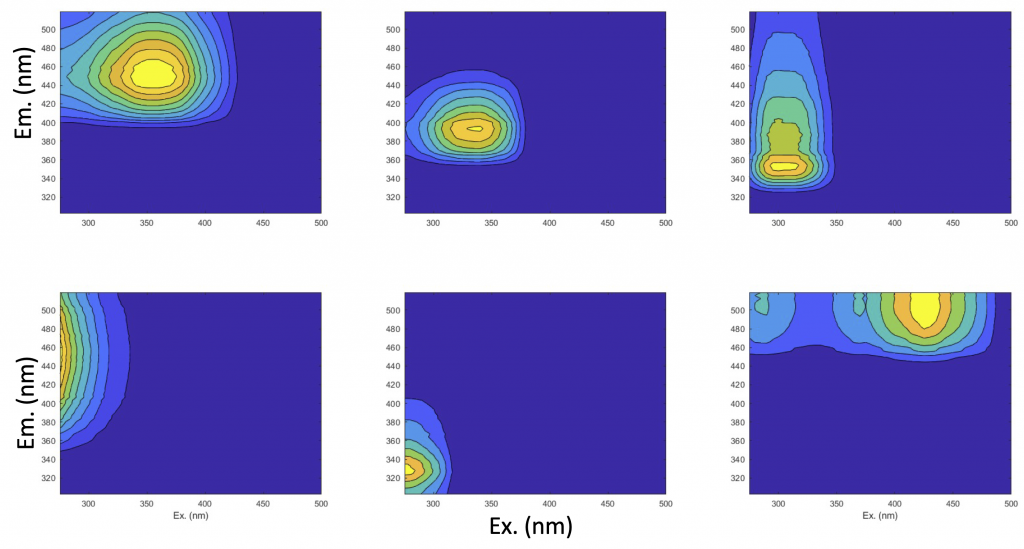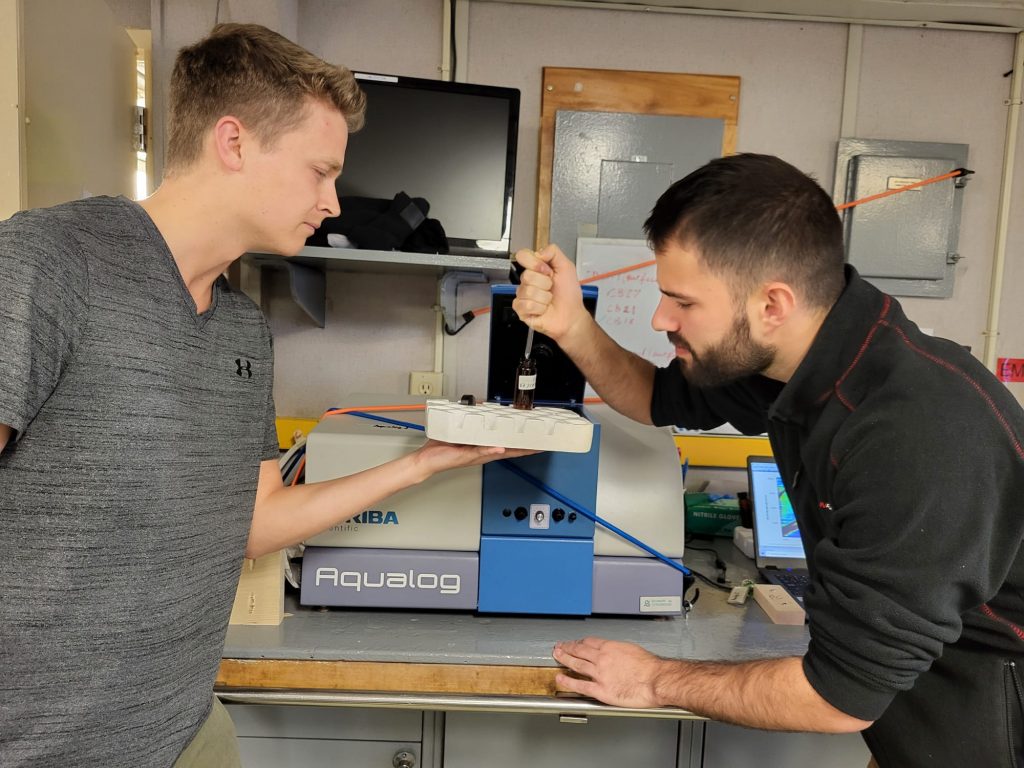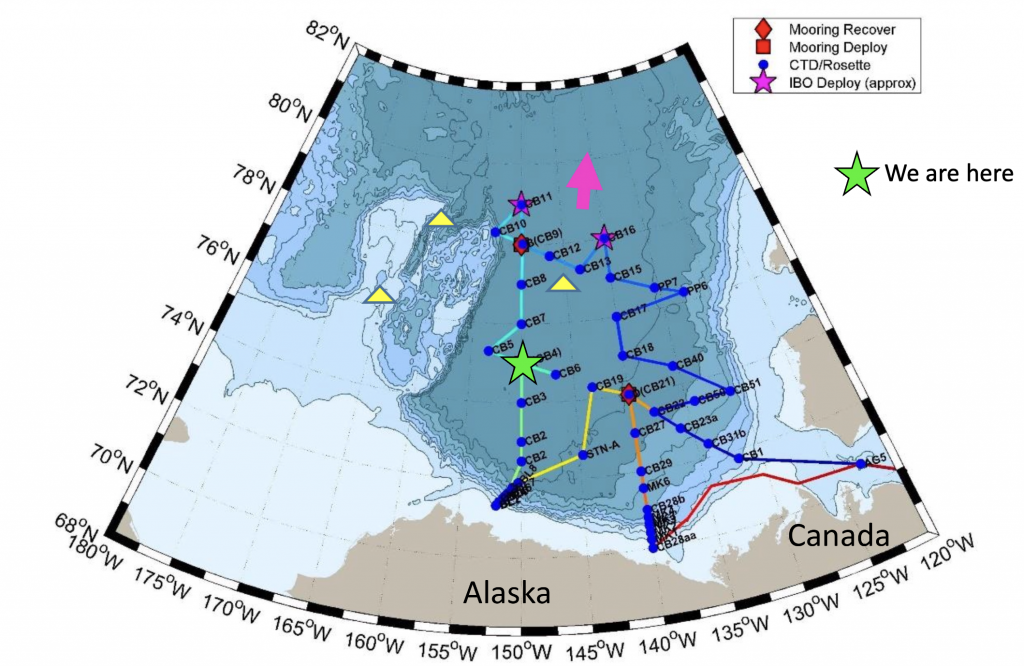Dispatch 16: Why Does Dissolved Organic Matter Matter?
Justin Forget
September 30, 2023
Dispatch 16: Why Does Dissolved Organic Matter Matter?
Hi, my name is Justin Forget and I’m a master’s student in chemistry from the Université de Sherbrooke. It is my second time on the CCGS Louis S. St‑Laurent and this year I’m part of the night watch, doing bongos and enjoying the rosette.
Dissolved organic matter (DOM) is made of a large mixture of complex molecules that originate from the decomposition of living organisms (plants, bacteria, animals…). Since DOM is mainly made of carbon, its behavior in the environment will greatly influence the carbon cycle under climate change. This is why we are measuring the fluorescent dissolved organic matter (FDOM) here in the Arctic Ocean. Even though FDOM only represents a tiny fraction of the entire DOM pool, it can provide us with crucial information including molecular weights, concentrations and resistance to decomposition.
To analyse FDOM, we use a fluorometer which is an instrument that can send specifics wavelengths (excitation wavelengths) through a glass tube containing our water sample and measure the signal emitted (the emission wavelengths) by the sample. As a result, we obtain a complete spectrum for each excitation/emission combination and the associated signal intensity. We call it an excitation/emission matrix (EEM) (see image above). Then we can use a special processing called PARAFAC (Parallel Factor Analysis) to distinguish the different molecules with fluorescent properties.
To help us trace the organic matter, we also collect water from the rosette to sample for barium. Barium is a naturally occurring metal in the earth’s crust known to be a great freshwater tracer and, therefore, a great DOM tracer as well in the Canada Basin region. Finally, we collect 1 liter surface water samples and filter them on a solid phase extraction column (SPE) that captures DOM. Once extracted, this DOM is analyzed using high resolution mass spectrometry, giving us very precise information about the mass, the diversity and the structure of the molecules.
It might seem like a lot of analysis and efforts only for DOM… but this is normal! As mentioned earlier, dissolved organic matter is made of a large spectrum of properties and represents huge analytical challenges from a chemist’s perspective. This is why we must use a variety of approaches to understand how DOM behaves and evolves in the ocean.



